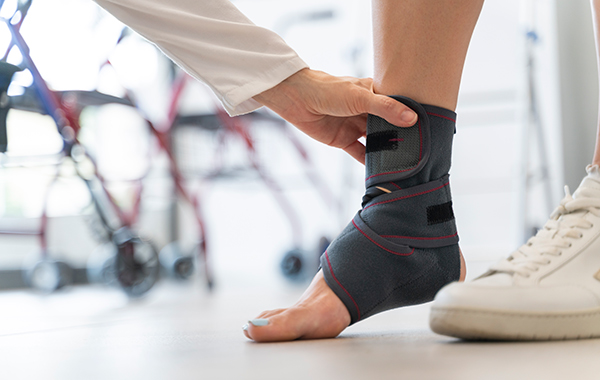Heel Spur
Heel spur syndrome happens when the tissue on the bottom of your foot (the plantar fascia) and the heel bone (calcaneus) are under too much stress. This stress leads to extra bone growth, forming a heel spur.
UNDERSTANDING HEEL SPUR SYNDROME
Overview
A heel spur is a bony growth on the underside of the heel that often looks like a small hook. It’s medically called a “calcaneal spur” but is more commonly known as a “heel spur.”
Heel spurs are fairly common, but only about 5% of people with them actually feel pain. Because of this, heel spurs can sometimes go unnoticed until an X-ray is done. Before an X-ray confirms the presence of a heel spur, the condition might be called heel spur syndrome.
Since heel spurs often don’t cause pain on their own, they’re frequently linked with plantar fasciitis, a condition where pain comes from an injured band of tissue in the foot.

What are the common symptoms?
A sharp, stabbing pain in the heel, like being pricked with a knife
A dull ache in the heel, especially when you first get out of bed in the morning
Pain that gets worse after standing for a long time
Trouble walking without shoes

What are the risk factors
Heel spur syndrome is mainly caused by stress on the plantar fascia and heel bone, but several factors can make you more likely to develop it:
Flat feet
Being overweight
Pregnancy
Flexible joints (hypermobility)
Shoes that don't offer good support
Suddenly increasing physical activity

To relieve heel pain and manage inflammation at home, you can try:
Applying ice to the affected heel
Gently stretching your calves and feet
Using over-the-counter or prescription painkillers

Keep in mind that these methods provide temporary relief and don’t tackle the underlying cause of the pain.
If your heel pain continues or seems to be getting worse, it’s important to consult a podiatrist. They can properly diagnose and treat heel spur syndrome with various techniques, including:
Shockwave therapy
Super Inductive therapy
Sports taping
Stretching exercises
Customised orthotics

Persistent heel pain from heel spurs can worsen and limit your ability to move. In some cases, heel spurs can even fracture or tear the plantar fascia. To prevent further issues, your podiatrist might use extracorporeal shockwave therapy (ESWT) to help break down calcifications and reduce pain and inflammation.
Book your initial podiatry visit
hello@nofrillspodiatry.com
Phone
9007 1085
Open Hours
Mondays - Sundays: 9am-6pm
We're Here Whenever You Need Us
hello@nofrillspodiatry.com
Contact Us
9007 1085
Open Hours
Monday-Sundays: 10am to 7pm
Address
About
About Us
Symptoms We Help With
FAQs
Careers
Contact Us